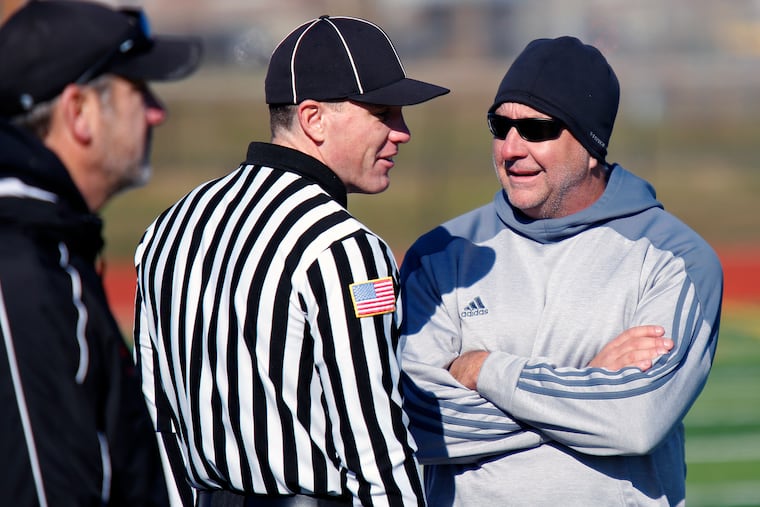Pennsylvania and New Jersey high school football, sports still up in the air as COVID-19 guidelines remain under review
A big problem will be scheduling. Can coaches hold meaningful practices if students have conflicting availability? Will buses be available to transport teams to and from games and practices when the daily schedule is changed and buses must be cleaned between trips?

June will turn into July on Wednesday, and high school sports teams, thanks to the COVID-19 pandemic, still don’t know what the 2020 fall season will look like – if there is one.
“If there is anything short of a normal return to school, I don’t see logistically how we could have fall sports at all,” said Phil Gormley, the acting athletic director and former football coach at Northeast High School.
On Friday, athletes, coaches, and parents in South Jersey got a glimpse of what school will look like when it reopens, and it’s not even close to normal. Still, New Jersey Education Commissioner Lamont O. Repollet said he expected high school sports to be played this fall.
“However,” he said at a news conference, “athletics will look different.”
That’s because school overall will be different. Repollet’s education department issued guidelines to school districts that include part-time in-person instruction at the school, social distancing, temperature checks, contact tracing, and mandatory face coverings for school staff, visitors, and most students.
Last week, Education Secretary Pedro Rivera updated similar guidelines for Pennsylvania high schools. He designated July 1 for when schools in counties in the green or yellow phase of the state’s coronavirus reopening plan can resume in-person instruction.
Guidelines for a return to sports have also been created by both the PIAA and NJSIAA, the largest governing bodies for high school sports in Pennsylvania and New Jersey, respectively, based on state and federal rules. More updates and revisions from the states, the governing sports bodies, and other groups studying how school and sports may be held safely are expected by mid-July.
But the basic guidelines for sports won’t be different from those for school in general, and the preliminary guidelines don’t leave much wiggle room.
“Scholastic sports are part of the curriculum; they don’t operate independently,” Colleen Maguire, the NJSIAA chief operating officer, said in a statement.
For now, according to the NJSIAA, New Jersey teams may begin limited workouts on July 13. The start of full fall practice for football and tennis teams is set for Aug. 10, with the other sports opening Aug. 17. The 2020 schedules, which were completed before the schools closed in March, are set to begin the week after Labor Day, which is Sept. 7.
But ...
“It’s tricky,” said Lefty Banos, the athletic director at Haddonfield. “It’s the times we live in. We’re still considering our options. I would love more than anything else to be out there playing. But we really don’t know yet what we will be able to do when. We’re in a holding pattern.”
Pennsylvania schools generally follow a similar schedule. But the state and the PIAA have tasked each school district with developing its own protocol. So, while some districts have allowed limited workouts to begin, others remain shut down as they await more guidance.
A big problem, especially for athletes, will be scheduling. Can coaches hold meaningful practices if students have conflicting availability? Will buses be available to transport teams to and from games and practices when the daily schedule is changed and buses must be cleaned between trips?
How will social distancing work between the lines and in the locker rooms? And should athletes compete at all if fans are not permitted to attend the games and cheer them on?
No matter what happens, Banos said, no one will go into this season having experienced anything like it before.
“The districts are working on it,” Gormley said. “But it’s a big problem.”